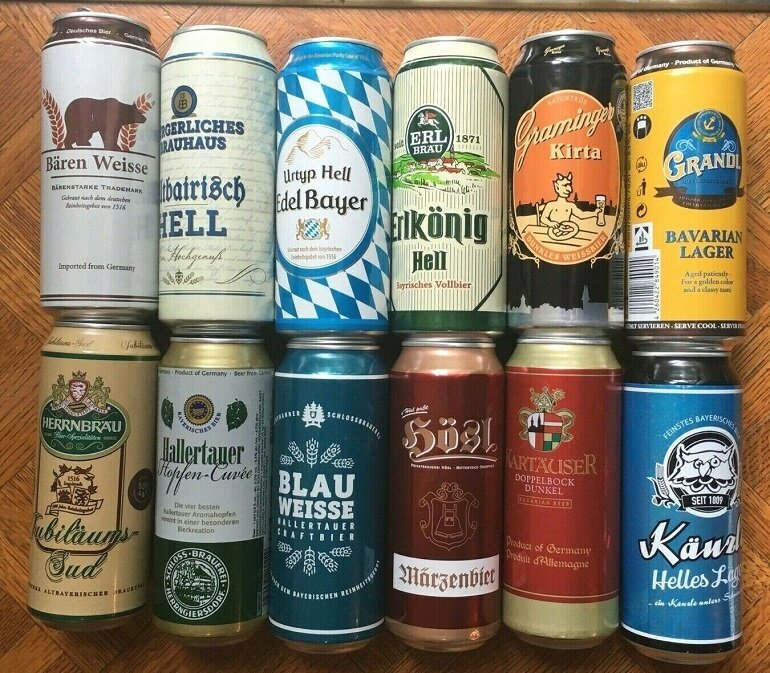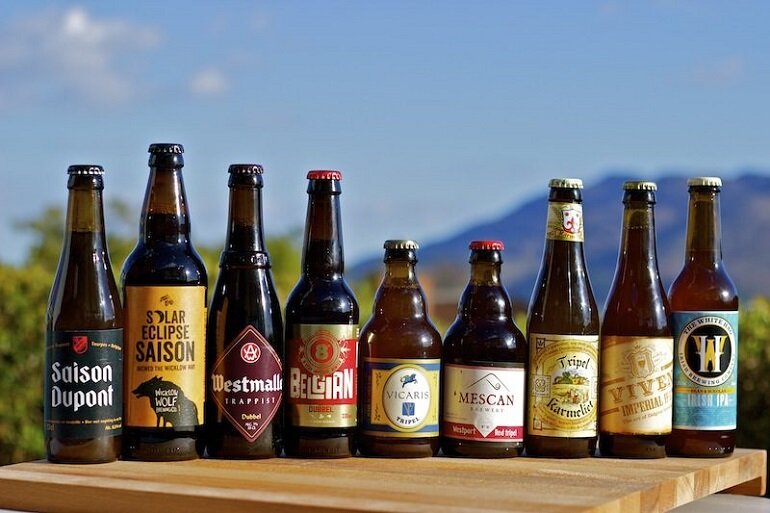Skip to main content in article(see)
German imported beer has very strict beer purity laws that only allow the use of water, yeast, hops and malt, as well as strict production process laws. Meanwhile, Belgian imported beer can add anything they like as long as it is not toxic, such as coriander, fruit,…
To understand the differences, we must look at their history and culture, which plays a major role in how beer is brewed in each of these two countries.
1. Overview of German imported beer
1.1 Some details about the history of German imported beer
Germany’s beer industry is famous for its activity under the 500-year-old Reinheitsgebot, when beer purity laws came into effect in 1516.
The law was originally enacted as a means of quality control and a way to standardize products and price the grain used to brew beer. It only allows barley, hops and water as ingredients for beer production.
Later updates to Reinheitsgehot allowed the use of yeast and malted grains such as wheat along with hops and water.
1.2 Comments on imported German beer

CLSEVXY Magnifying Handheld Mirror Double Sided, 1X 15X Magnification Hand Mirror, Travel Folding Held Adjustable Rotation Pedestal Makeup Desk Vanity
$9.99 (as of December 23, 2024 00:31 GMT +00:00 - More infoProduct prices and availability are accurate as of the date/time indicated and are subject to change. Any price and availability information displayed on [relevant Amazon Site(s), as applicable] at the time of purchase will apply to the purchase of this product.)EARTHLITE Disposable Face Cradle Covers – Medical-Grade, Ultra Soft, Luxurious, Non-Sticking Massage Headrest Covers for Massage Tables & Massage Chairs
$16.99 (as of December 23, 2024 00:31 GMT +00:00 - More infoProduct prices and availability are accurate as of the date/time indicated and are subject to change. Any price and availability information displayed on [relevant Amazon Site(s), as applicable] at the time of purchase will apply to the purchase of this product.)TEPENAR Bonnet Hair Dryer Attachment: Upgraded Extra Large Hooded Hair Dryer Adjustable Soft Blow Dryer Caps - Easy to Use for Natural Curly Textured Hair Care Styling Fast Drying
$15.88 (as of December 23, 2024 00:31 GMT +00:00 - More infoProduct prices and availability are accurate as of the date/time indicated and are subject to change. Any price and availability information displayed on [relevant Amazon Site(s), as applicable] at the time of purchase will apply to the purchase of this product.)Saloniture 3-Piece Microfiber Massage Table Sheet Set - Premium Facial Bed Cover - Includes Flat and Fitted Sheets with Face Cradle Cover - White
$17.99 (as of December 23, 2024 00:31 GMT +00:00 - More infoProduct prices and availability are accurate as of the date/time indicated and are subject to change. Any price and availability information displayed on [relevant Amazon Site(s), as applicable] at the time of purchase will apply to the purchase of this product.)ForPro Professional Collection Premium Hand Mirror with Handle, 6.3" W x 9.6" L, Multi-Purpose Handheld Mirror with Distortion-Free Reflection, Black
$4.99 (as of December 23, 2024 00:31 GMT +00:00 - More infoProduct prices and availability are accurate as of the date/time indicated and are subject to change. Any price and availability information displayed on [relevant Amazon Site(s), as applicable] at the time of purchase will apply to the purchase of this product.)Ask any German brewer about their beer and the answer is likely to be “We make the best lagers or wheat beers.” This is probably the correct answer because Germans are famous for high-quality beers, strictly following long-standing beer purity laws and produced using traditional methods. However, you are unlikely to find major differences in beer styles in Germany.
1.3 Popular German imported beers
Pilsner – This pale ale is Germany’s most popular beer.
Hefeweizen – The most popular German wheat beer, known for its cloudy appearance due to the special yeast used in brewing.
Marzen – This classic Bavarian lager is the darkest beer with a relatively low alcohol content.
Kölsch – This beer is fermented at a cooler temperature than other beers and has a fruity and slightly strong flavor. Kölsch is protected under European Union regulations and can only be used by breweries in the Cologne region.
2. Overview of imported Belgian beer
2.1 Some details about the history of imported Belgian beer
Like Germany, Belgium has a centuries-old beer brewing tradition. Before becoming a sovereign kingdom in 1831, the small country was ruled at different points in its history by Austria, France and the Netherlands.
The influence of those countries, as well as its location between France and Germany, allowed different beer styles to develop across the country. The lack of strict regulations on ingredients has encouraged Belgian brewers to get creative. Some brewers followed the simpler German approach, but others were influenced by the French, adding a variety of herbs, spices and fruits to their beers.
Trappist monks also helped promote innovation, and they continue to produce the most popular Belgian beers.
2.2 Comments on imported Belgian beer

The culture and philosophy of brewing in Belgium is completely different from that in Germany. Besides the 4 main ingredients, they use many different ingredients to create their own style and flavor. You will find many different beer styles and flavors in Belgium as brewers compete with each other to create their own unique beer styles.
1.3 Popular Belgian imported beers
Dubbel – A Trappist beer made in a monastery, rich reddish brown in color from caramelized beet sugar.
Quadrupel – Similar to dubbel but with more flavor and higher alcohol content.
Tripel – A golden beer similar to dubbel but brewed with uncaramelized beet sugar.
Saison – A pale, citrusy, hop-forward ‘farmhouse’ beer with high carbonation.
Witbier – A crisp beer made with unsalted wheat, coriander and orange peel.
3. Interesting differences between German and Belgian imported beer
Through the above two detailed overview analysis reviews, have you probably recognized the main differences between German imported beer and Belgian imported beer?

If not, then the interesting difference between these two types of beer is: German imported beer has very strict beer purity laws that only allow the use of water, yeast, hops and malt, as well as process laws. Strict production. Meanwhile, Belgian imported beer can add anything they like as long as it’s not toxic, such as coriander, fruit, or whatever.
This is also the reason why German imported beer tastes the same while Belgian imported beer has hundreds of completely different beers.
























































































































